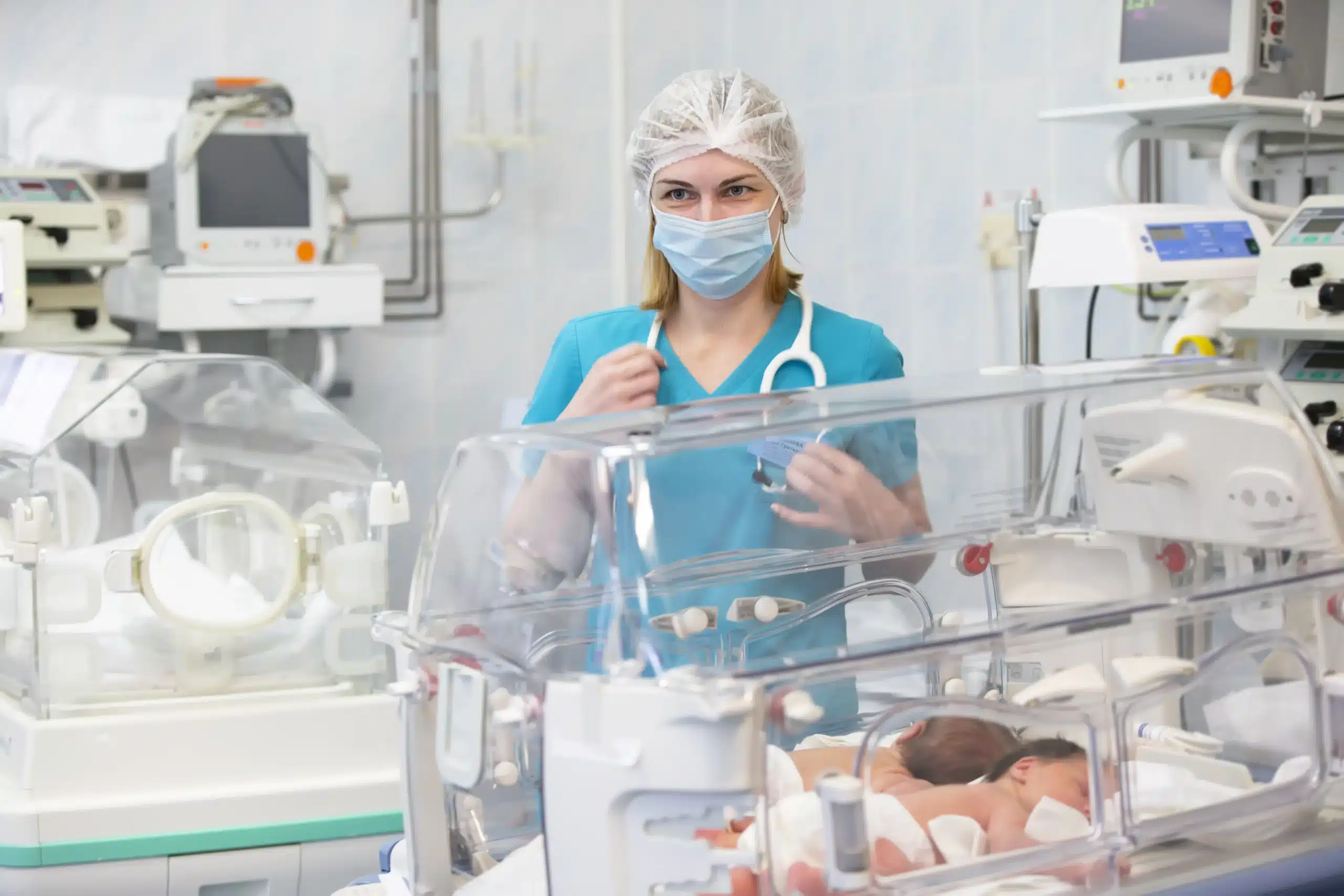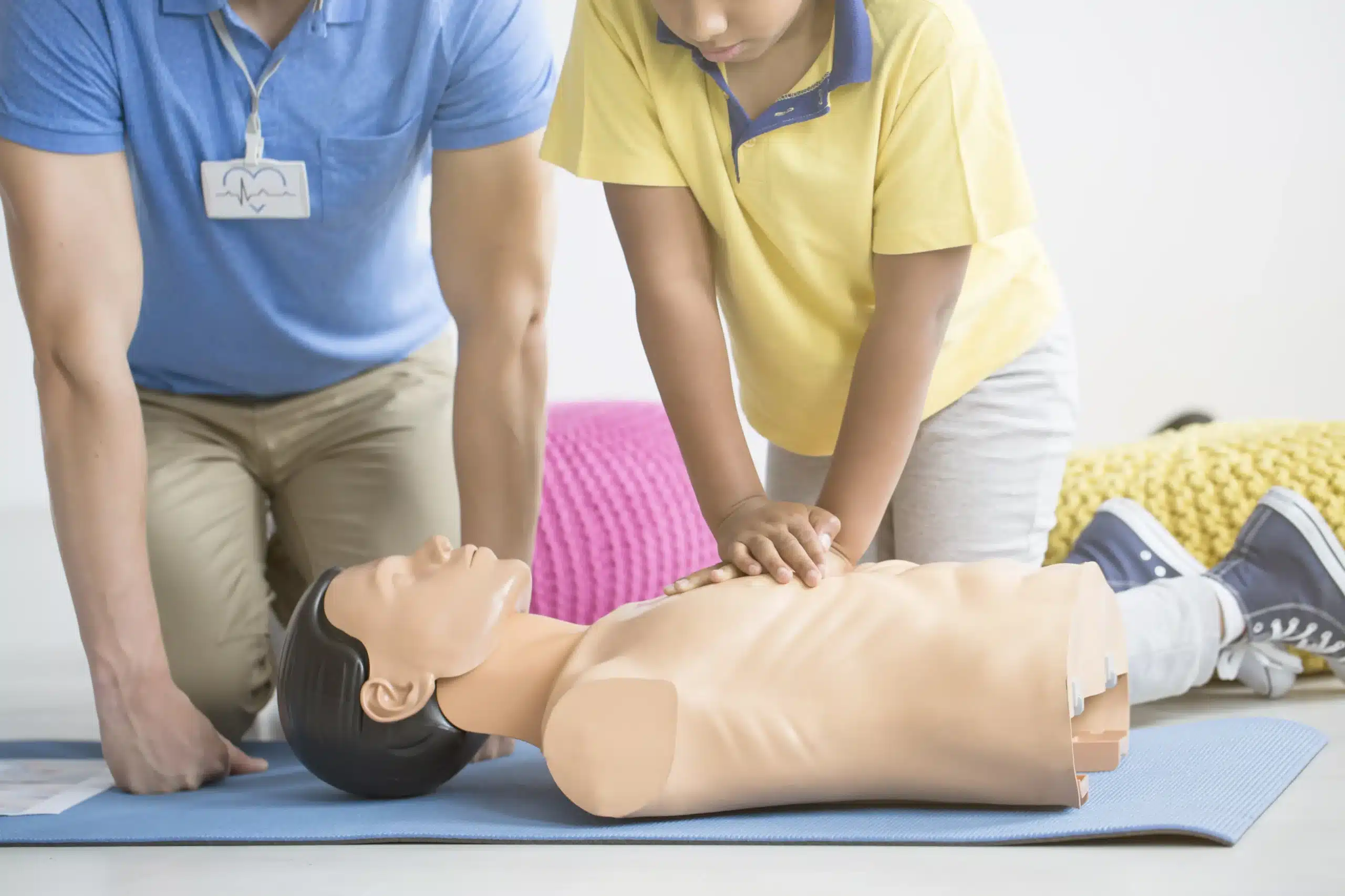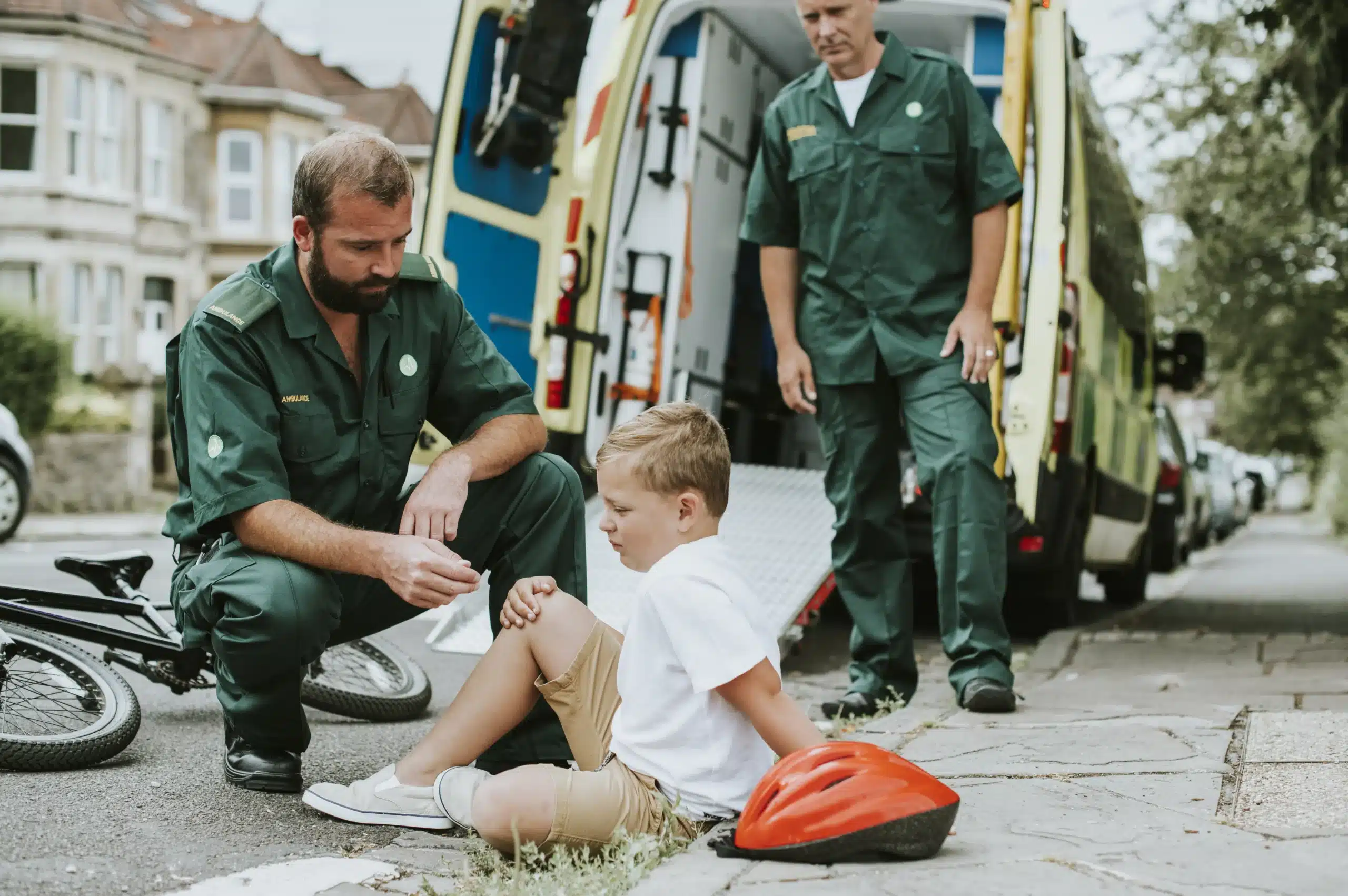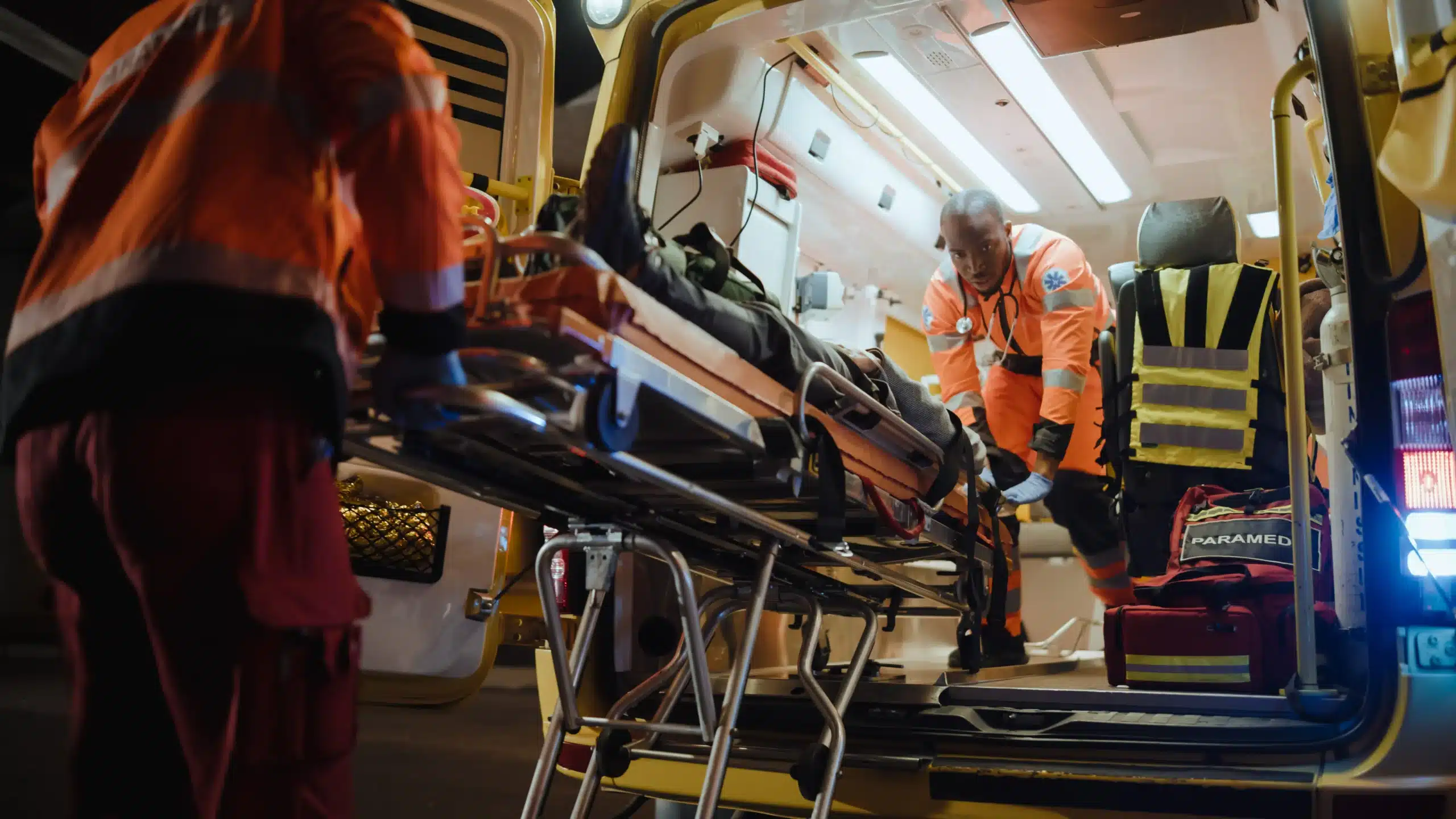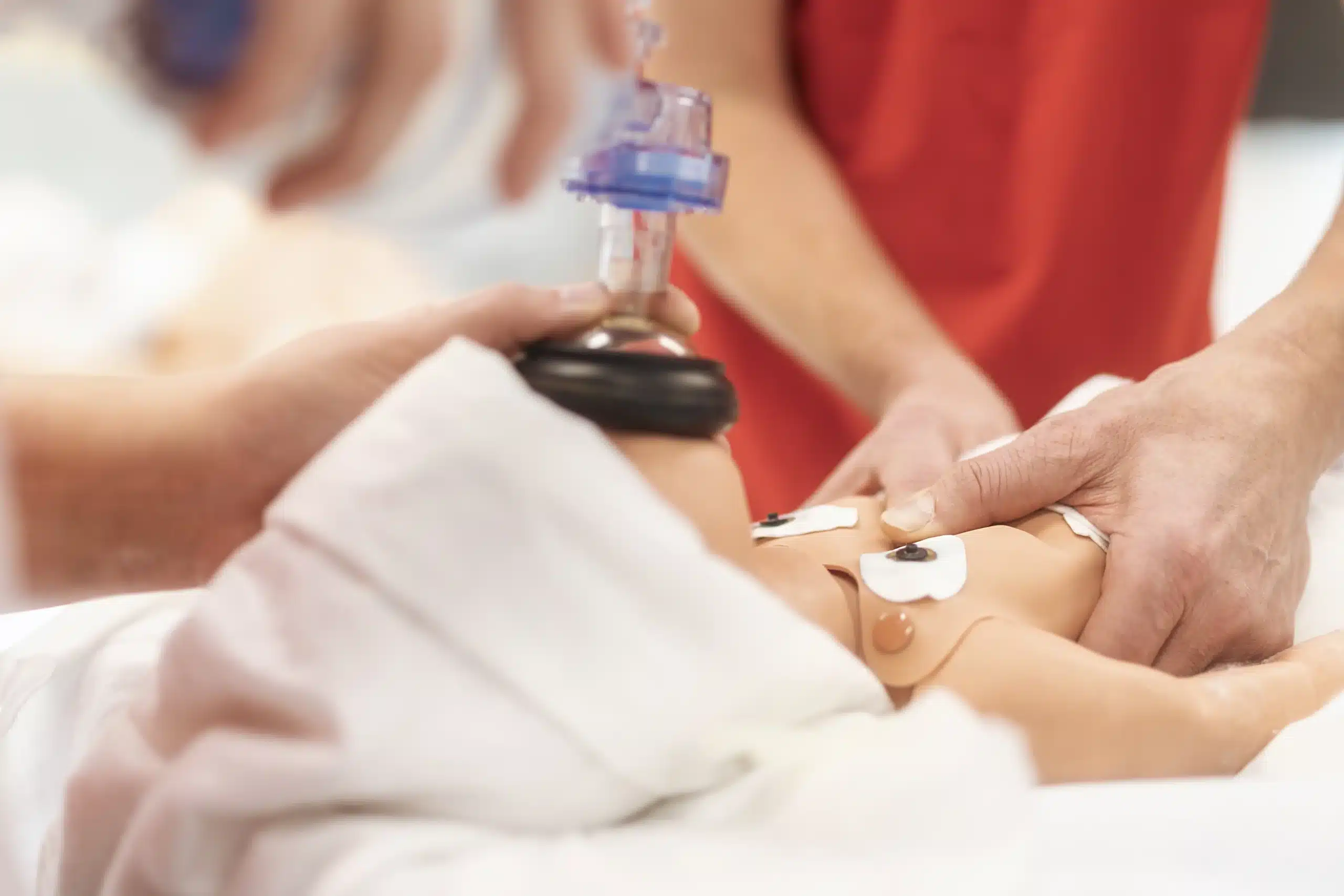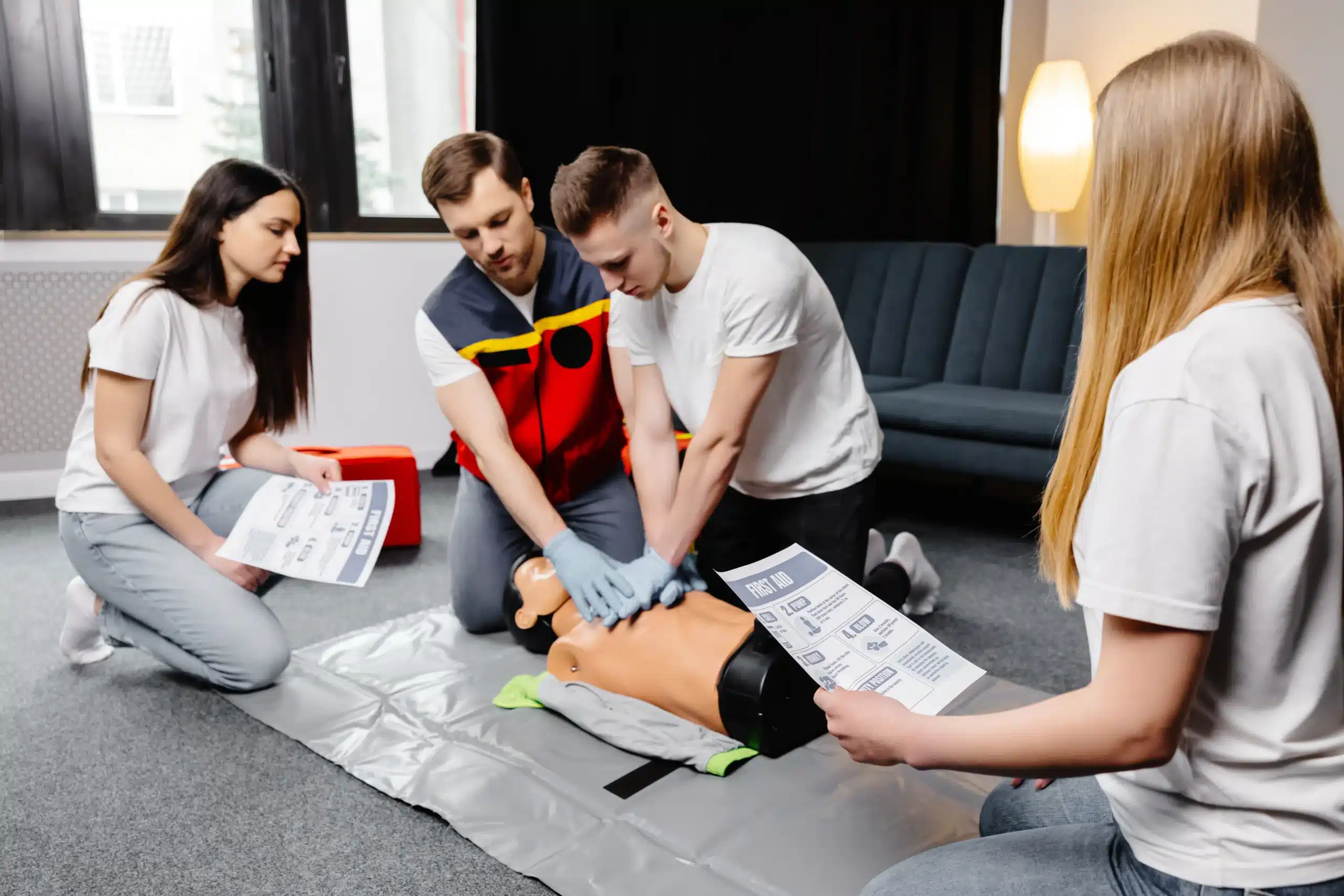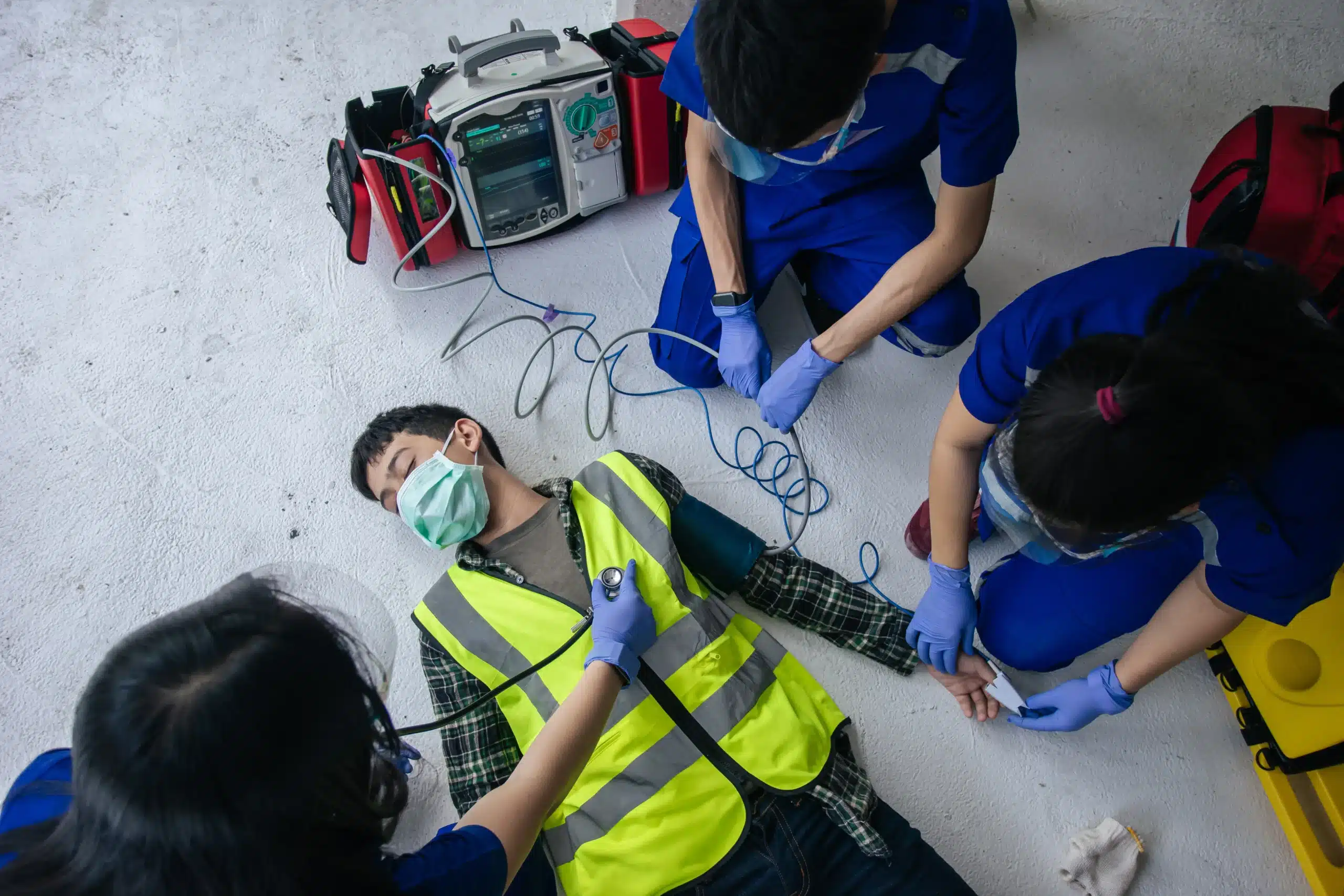Typing “first-aid classes near me” into a search engine is the first step toward gaining a valuable life skill. Knowing how to respond to medical emergencies—from everyday mishaps to more serious situations—can make a world of difference. This comprehensive guide walks you through everything you need to know about first-aid training. We’ll cover the various types of courses available, the skills you’ll learn, how to find a class that fits your needs, and even how to keep your skills fresh long after you’ve received your certification. Whether you’re a parent, a teacher, a healthcare professional, or simply someone who wants to be prepared, this guide is your roadmap to finding the perfect first-aid training.
Key Takeaways
- First aid skills are for everyone: Learning first aid equips you to handle medical situations ranging from minor injuries to serious emergencies, giving you the confidence to act quickly and effectively.
- Find the right training for you: Whether you’re a healthcare professional, a parent, or simply want to be prepared, explore various first-aid courses and certifications to match your specific needs and goals.
- Maintain your skills: First-aid knowledge requires upkeep. Regularly refresh your training through recertification courses, practice scenarios, and staying updated on the latest guidelines to ensure you’re always ready to help.
What are First-Aid Classes?
First-aid classes teach you how to respond to medical emergencies. From minor injuries like cuts and scrapes to more serious situations like heart attacks and strokes, these courses equip you with the knowledge and skills to provide immediate care until professional help arrives. Whether you’re a healthcare professional, a parent, a teacher, or simply someone who wants to be prepared, first-aid training can make a real difference. Find a class near you.
Basic First Aid
Basic first-aid classes cover essential skills everyone should know. You’ll learn how to treat common injuries like burns, sprains, and fractures. You’ll also learn how to control bleeding, clean and bandage wounds, and recognize the signs of a medical emergency. These foundational skills empower you to confidently handle everyday situations and potentially save a life. Many basic first-aid courses also include CPR training, making them even more valuable. Check out these CPR and First-Aid certification courses in Morgan Hill.
CPR and AED Training
CPR (cardiopulmonary resuscitation) is a life-saving technique used when someone’s heart stops beating. CPR classes teach you how to perform chest compressions and rescue breaths to keep blood and oxygen flowing to the brain and other vital organs. These classes also often include training on how to use an AED (automated external defibrillator), a portable device that can help restore a normal heart rhythm. CPR and AED training are crucial for anyone working in healthcare, but they’re also incredibly beneficial for the general public. Learn more about CPR classes in Morgan Hill.
Specialized First-Aid Training
Beyond basic first-aid and CPR, there are specialized courses designed for specific needs and professions. For example, wilderness first-aid classes teach you how to handle medical emergencies in remote locations, while pediatric first-aid classes focus on the unique needs of infants and children. Healthcare providers can pursue advanced certifications like ACLS (Advanced Cardiovascular Life Support) or PALS (Pediatric Advanced Life Support). These specialized courses provide in-depth knowledge and advanced skills for managing complex medical situations. Morgan Hill CPR classes offer a wide variety of AHA-certified courses. No matter your background or profession, there’s a first-aid class out there that can help you develop valuable skills and make a difference in someone’s life. Consider exploring these CPR classes in Morgan Hill.
Find First-Aid Classes Near You
Finding the right first-aid class is easier than you think. Whether you prefer online learning, in-person instruction, or a combination of both, plenty of resources can help you find a course that fits your needs and schedule.
Online Search
Start your search online. The American Red Cross website is a great resource to locate first-aid classes near you. They offer various courses, including online, in-person, and blended learning options. Simply enter your zip code to find available courses in your area. Many other organizations also have online course registration, so explore different websites to compare course content, schedules, and pricing. Our Morgan Hill CPR classes website offers a variety of options for those in Morgan Hill, San Jose, and Gilroy.
Local Organizations
Check with local organizations in your community. Places like Healthline First Aid in Milwaukee and CPR Certification Dallas offer a range of AHA-certified courses. Hospitals, community centers, and fire departments often host first-aid training sessions. Contacting these organizations directly can give you information on upcoming classes.
Community Resources
Explore community resources for potential free or low-cost training. Your local Community Emergency Response Team (CERT) often includes first-aid and CPR certification as part of its program. Additionally, connect with your local Red Cross chapter, county Emergency Management Office, community colleges, or hospitals. These organizations may offer free or discounted first-aid courses to the public. You can also check online forums like Reddit for tips on finding affordable certification opportunities.
First-Aid Training Costs
Knowing the price range for first-aid training can help you budget and find a course that fits your needs. Costs vary based on the course type, location, and training provider. Let’s break down what you can expect.
Typical Prices
Combined CPR and first-aid certification courses often cost around $140. This usually covers online instruction, in-person skills practice, and your certification card. Basic first-aid courses without CPR might be slightly less. More advanced certifications, such as those for healthcare providers, like BLS certification, can range from $25 to $35. Remember, these are estimates, and prices can differ between providers. Always check directly with the organization offering the course for the most up-to-date pricing.
Discounts
Many training centers offer discounts. For example, Morgan Hill CPR Classes offers discounts for group registrations, students, or corporate clients. Workplaces or community groups might also sponsor training sessions, reducing the cost for participants. It’s always worth asking about potential discounts when you inquire about a course.
Free/Low-Cost Options
While less common, free or low-cost first-aid training does exist. Your local community centers, fire departments, or Red Cross chapters sometimes offer discounted or subsidized courses. It takes some research, but online forums (like this Reddit thread) can offer helpful leads. Also, check with your local or county Emergency Management Office, hospitals, and community colleges for information on free or reduced-cost training opportunities.
Benefits of First-Aid Training
Knowing what to do in a medical emergency can make all the difference. First-aid training gives you the skills and confidence to respond effectively, and it can even open up new career opportunities. Let’s take a closer look at the advantages of first-aid training.
Learn Life-Saving Skills
First-aid training equips you with practical skills to handle various medical situations, from minor injuries like cuts and burns to more serious emergencies like heart attacks and strokes. You’ll learn CPR, how to control bleeding, and how to stabilize someone until professional help arrives. These skills can truly save lives. It’s about being prepared to help your family, friends, coworkers, or even strangers when they need it most.
Build Confidence
It’s natural to feel overwhelmed during a crisis. First-aid training not only teaches you the right techniques but also builds your confidence to use them. Through hands-on practice and realistic scenarios, you’ll develop the composure and decision-making skills to act quickly and effectively under pressure. This confidence extends beyond the classroom, empowering you to handle unexpected situations in your daily life. For more details on certification, see our first-aid guide.
Advance Your Career
First-aid certification is a valuable asset in many professions. It’s often a requirement for healthcare professionals. But even outside the medical field, having first-aid skills can give you an advantage. Employers value employees who can handle emergencies and ensure workplace safety. Plus, first-aid training demonstrates a commitment to personal and professional growth. Check out our low price guarantee for affordable training options.
What Happens in a First-Aid Class?
Knowing what to expect can help you feel more prepared and confident going into your first-aid training. Here’s a glimpse at what a typical first-aid class entails:
Course Structure
First-aid classes cover essential topics, from recognizing and responding to medical emergencies like choking and allergic reactions to understanding basic life support (BLS) techniques. You’ll learn how to manage injuries like cuts, burns, fractures, and sprains. Many classes, like those offered at Morgan Hill CPR Classes, align with American Heart Association (AHA) guidelines, covering BLS, ACLS (Advanced Cardiovascular Life Support), and PALS (Pediatric Advanced Life Support). This comprehensive approach ensures you gain a well-rounded understanding of first-aid principles.
Hands-On Practice
The real value of a first-aid class comes from the hands-on practice. It’s one thing to read about performing CPR; it’s another to actually do it. Classes incorporate interactive sessions and simulations, giving you the chance to practice techniques like CPR, bandaging wounds, and splinting fractures in a safe and supportive learning environment. Experienced instructors guide you through each skill, offering feedback and ensuring you develop the muscle memory and confidence to act effectively in a real emergency. For a better sense of what to expect, visit our page on course preparation.
Certification
After successfully completing the course and demonstrating your skills, you’ll receive a certification card. This card signifies that you’ve met the course requirements and are equipped to provide first-aid assistance. These certifications are often valid for two years and are widely recognized by employers and organizations. Our combined CPR and First Aid course includes online training, in-person skills testing, and your certification card. Check out our low price guarantee and discounts for group classes.
Choose the Right First-Aid Class
Finding the right first-aid class means understanding your needs, comparing available courses, and carefully evaluating potential instructors. Taking the time to do your research ensures you get the most from your training.
Assess Your Needs
Before searching for “first-aid classes near me,” think about why you want first-aid training. Are you required to have certification for your job, or are you a parent wanting to feel prepared for any childhood mishap? First-aid certification classes cater to a wide range of people, from healthcare providers to teachers and stay-at-home parents. Understanding your specific needs helps narrow your search. For example, healthcare professionals often require specific certifications like Basic Life Support (BLS) or Advanced Cardiovascular Life Support (ACLS). If you’re aiming for workplace safety training, look into programs designed for groups, which sometimes offer group discounts.
Compare Courses
Once you know the type of training you need, start comparing courses. Look at the course content, duration, and the certifying organization. Morgan Hill CPR Classes offers a variety of American Heart Association (AHA)-certified courses, from basic first aid to advanced life support. Consider factors like class size and schedule flexibility. Some classes are offered on weekends or evenings for busy schedules.
Evaluate Instructors
The instructor’s experience and teaching style significantly impact your learning. Look for certified instructors with a strong background in first aid and CPR. Reading reviews or testimonials from previous students gives you a sense of their teaching approach. A good instructor creates a comfortable learning environment, answers your questions thoroughly, and provides hands-on practice. Instructors who dispel common first-aid myths and offer practical training can better equip you to handle real-life emergencies. For healthcare professionals seeking certification through the American Heart Association’s Resuscitation Quality Improvement (RQI) program, ensure the training center and instructors are RQI-qualified. This specialized training is an efficient way for medical professionals to obtain their AHA BLS, ACLS, and PALS certification cards.
Prepare for Your First-Aid Class
Getting ready for your first-aid class involves a little more than just signing up. A bit of preparation beforehand can make a real difference in how much you get out of the training. Here’s how to get ready:
Gather Materials
Before heading to class, gather your materials. Your instructor will likely provide a list of required items, often including a notepad and pen. Some courses use specific textbooks or manuals, so check if you need to purchase those in advance. Also, make sure you can access any online resources the instructor provides. Having everything ready to go lets you focus on learning those life-saving skills. For specifics on what to bring to our Morgan Hill CPR classes, check out our course preparation page.
Dress Code & Physical Prep
First-aid classes are hands-on. You’ll be practicing techniques, which might mean getting on the floor or moving around quite a bit. Wear comfortable clothes that allow you to move freely. Closed-toe shoes are a must for safety. Consider bringing a water bottle to stay hydrated, especially during longer sessions.
Mental Prep
Mental preparation is just as important as the physical side of things. Take some time to familiarize yourself with basic first-aid procedures and terminology. Even a quick overview can help you feel more comfortable and confident going into the class. Knowing the basics beforehand can reduce any anxiety and allow you to absorb the information more effectively. You can find helpful resources and information on our blog. Regular refreshers between courses can also help you retain knowledge and confidence, according to ABC Training Services. This will help you build confidence for your training.
Maintain Your First-Aid Skills
Learning first aid is a smart move, but it’s not a one-and-done deal. Like any skill, your first-aid knowledge fades over time. Regularly refreshing your training is key to staying prepared and confident in an emergency. Here’s how to keep your skills sharp:
Recertification
Think of first-aid certification like a driver’s license—it needs to be renewed. Most certifications are valid for two years. As a first-aid student, your skills will likely start to decline within the first year after your initial training. Don’t let them lapse. Sign up for recertification courses to stay current with the latest guidelines and techniques. It’s a small investment of time that can make a huge difference when it matters most. The American Heart Association offers a variety of recertification courses to meet your needs.
Practice & Refreshers
Between recertification courses, regular practice is essential. Think of it like a workout for your brain—you need to exercise those first-aid muscles to keep them in top shape. Run through scenarios with friends or family. Watch first-aid videos online to refresh your memory on specific procedures. Even teaching basic techniques to others can reinforce your own knowledge. These refreshers will maintain your competence and boost your confidence, so you’ll be ready to act quickly and effectively under pressure.
Stay Updated
First-aid procedures can change as new research emerges. Staying informed about these updates is crucial for providing the most effective care. Regularly check trusted online resources like the Red Cross for the latest guidelines. Your training provider is also a great resource for updates and refresher materials. Staying up-to-date ensures your training remains effective and relevant, allowing you to provide the best possible care in any situation.
Popular First-Aid Training Providers
Finding the right first-aid training provider is an important step. Several respected organizations offer comprehensive courses. Here are a few popular options:
American Red Cross
The American Red Cross offers various training courses, including first aid, CPR, and AED instruction. They have options for individuals, families, and workplaces. Visit their site to find a class near you.
American Heart Association
The American Heart Association (AHA) focuses on cardiovascular health and offers a range of CPR, first aid, and AED training. Many healthcare providers pursue AHA certification. You can find AHA-certified courses through various training centers, such as Healthline First Aid in Milwaukee.
National Safety Council
The National Safety Council is a leader in safety training, offering various first-aid courses designed for different needs, including workplace safety and emergency response. Their training emphasizes practical skills and real-world scenarios.
St. John Ambulance
St. John Ambulance is a prominent international charity dedicated to first aid and healthcare services. They offer various first-aid training courses recognized across different sectors, focusing on practical skills and emergency preparedness.
Morgan Hill CPR Classes
Morgan Hill CPR Classes offers a comprehensive selection of American Heart Association (AHA)-certified courses, including BLS for healthcare providers, ACLS for advanced life support, PALS for pediatric emergencies, and standard first aid. Serving Morgan Hill, San Jose, and Gilroy, California, they offer a low-price guarantee and group discounts. You can find information on preparing for your course on their website. They also offer BLS and ACLS certifications through the AHA. Learn more about their low-price guarantee.
Related Articles
- First Aid Classes San Jose: A Complete Guide – Morgan Hill CPR Classes
- First-Aid Certification in Morgan Hill: A Complete Guide – Morgan Hill CPR Classes
- CPR Certification in San Jose: A Complete Guide
- Why CPR is Critical in Modern Healthcare
- Crucial CPR & First-Aid Training for Workplaces
Frequently Asked Questions
How much does first-aid training typically cost? The price of first-aid training varies depending on factors like the course type, location, and training provider. Combined CPR and first-aid certification courses often cost around $140, covering online instruction, in-person skills practice, and your certification card. Basic first-aid courses without CPR might be slightly less expensive. Advanced certifications, such as those for healthcare providers, can have different pricing structures. Always check directly with the organization offering the course for the most accurate pricing information. Many providers offer discounts, so be sure to ask.
What should I expect in a first-aid class? First-aid classes blend theory and practical application. You’ll learn how to recognize and respond to various medical emergencies, from minor injuries to life-threatening situations. Classes cover topics like CPR, bleeding control, wound care, and recognizing the signs of a heart attack or stroke. Hands-on practice is a crucial part of the learning experience, allowing you to develop the skills and confidence to apply what you’ve learned in a real emergency. You’ll practice techniques like bandaging, splinting, and CPR under the guidance of experienced instructors.
How can I find first-aid training near me? Finding a first-aid class is straightforward. Start by searching online. The American Red Cross website is a great resource, allowing you to search for classes by zip code. Many other organizations, including local hospitals, community centers, and fire departments, also offer first-aid training. Contacting these organizations directly can provide information on upcoming classes and registration details. Don’t forget to explore community resources for potential free or low-cost training opportunities.
Why is first-aid training important? First-aid training empowers you to respond effectively in medical emergencies. It equips you with the skills to provide immediate care, potentially saving lives and preventing further injury. Beyond the practical skills, first-aid training builds confidence and prepares you to handle unexpected situations. It also demonstrates a commitment to safety and can be a valuable asset in various professions.
How can I maintain my first-aid skills after completing a course? Maintaining your first-aid skills is crucial for ensuring you’re prepared to respond effectively in an emergency. Most first-aid certifications are valid for two years. Make sure to recertify before your current certification expires. Regularly practicing the techniques you learned in class, either individually or with friends and family, will help keep your skills sharp. Staying updated on the latest first-aid guidelines and procedures is also important, as recommendations can change over time.
